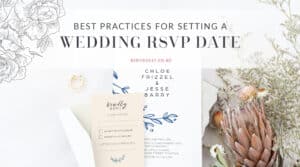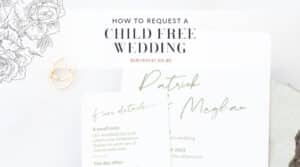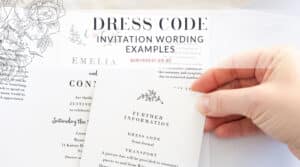Home » Blog » Weddings » Wedding Invitation Wording » Wording Wedding Dress Codes
Wording Wedding Dress Codes
Planning your wedding involves many details, and ensuring your guests dress appropriately is another way you can ensure the comfort of everyone. Including a dress code helps create the desired atmosphere and prevents any awkward wardrobe choices. Consider the anxiety of heading to an event when you don't know if what you're wearing is appropriate?! Your friends and family will typically have the same concerns about appropriate dress attire for your wedding. Here’s a comprehensive guide for engaged couples on how to communicate your wedding dress code effectively.
Why Include a Dress Code on Your Wedding Invitations?
Including a dress code on your wedding invitations sets the tone for your special day, helps guests dress appropriately, and ensures a cohesive look in your photos. A well-defined dress code clarifies the formality of the event and eliminates last-minute outfit panics.

How to share your wedding dress code with guests
The style of your invitation should convey the tone of your wedding—formal and traditional wedding invitation styles convey a different tone than bright and relaxed wedding invites. As well as the contextual clues, you can also explicitly state what you want. My rule of thumb when sharing any information is KISS (Keep It Simple Sweetie). Ensure your wording is easy to understand, clear and concise to avoid overwhelm.

Where to Include Your Wedding Dress Code
1. Wedding Invitation: This is where your wedding guests will look for this information first. You would typically place the dress code in the lower corner, or at the bottom center.
2. Information/Details Card: If you’re using a separate card for essential information, include the dress code here to keep the wedding invitation simple.
3. Wedding Website: You can use your wedding website to provide detailed dress code information. This can help answer any FAQs your guests might have about attire. If you have any specific requests, here's where to do it. You could mention any specific colours or styles to avoid, and highlight practical considerations (e.g., avoiding heels for a garden wedding). i.e:
- “Is there a dress code?” Answer directly: “The dress code for our wedding is [dress code].” Add a brief explanation with specifics.
- “Are there any styles or colors you'd prefer me to wear?” Provide a brief overview of your wedding theme or swatches of your colour palette. Mention preferred colours or fabrics but keep requests flexible.
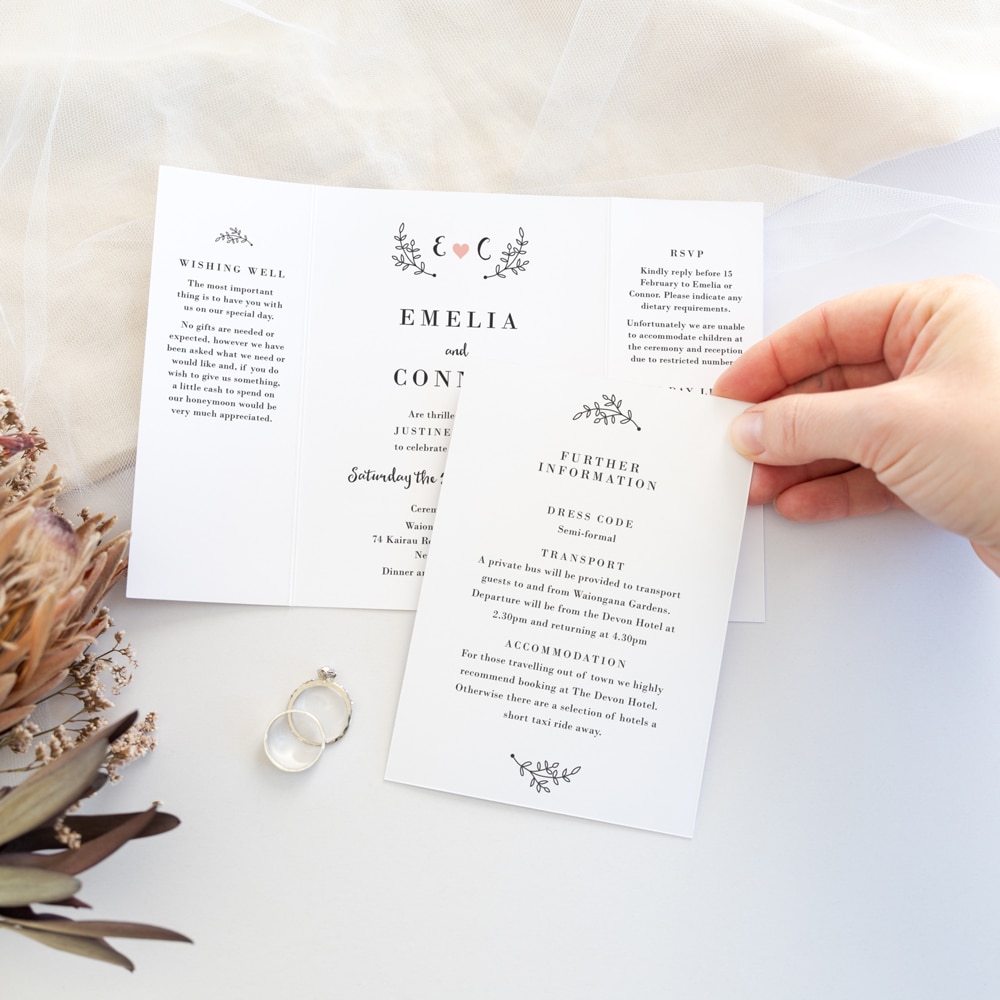
What are the different Wedding Dress Codes?
What is Formal Dress Code or 'White Tie'?
Formal attire, evening dress, or white tie is the most formal dress code. Women wear ball gowns, while men don top hats and tails. As the name “evening dress” suggests, this dress code applies to events beginning after dark.
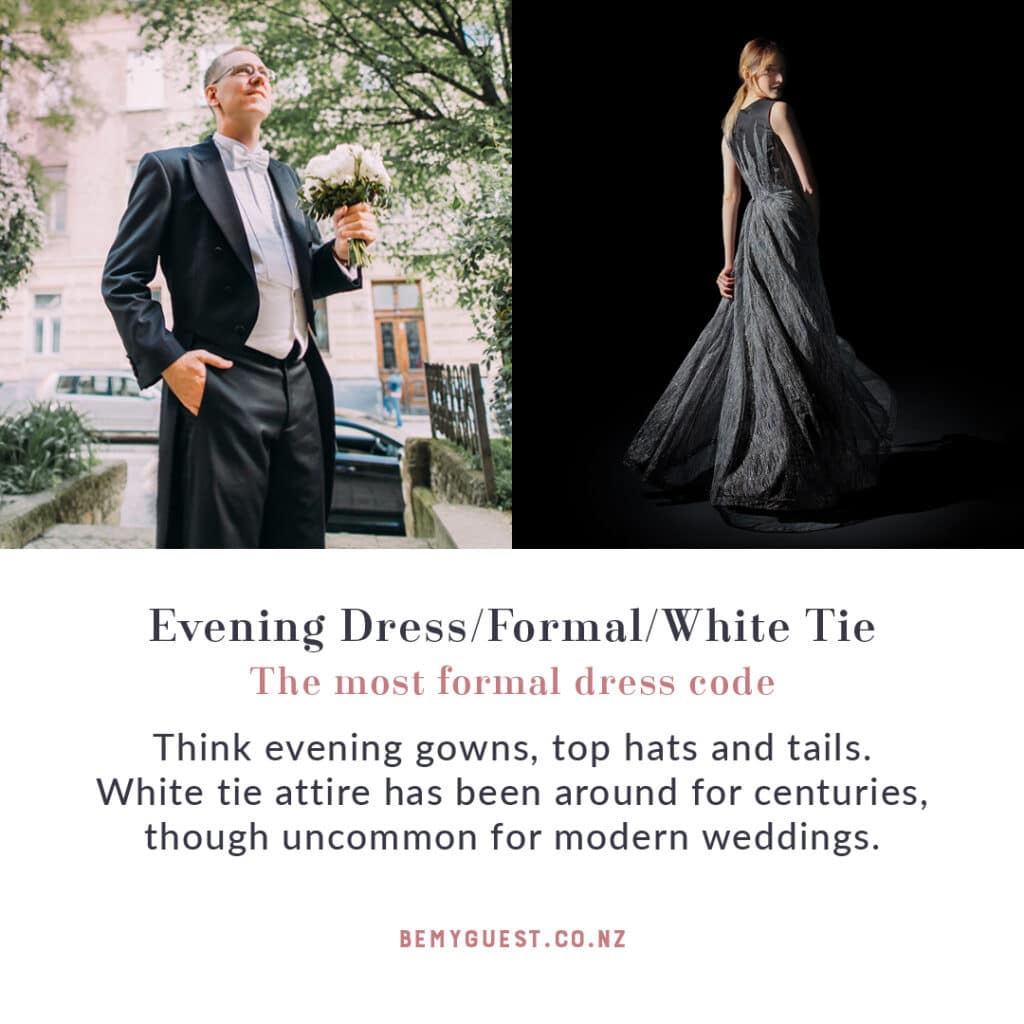
Example Wording:
"White-tie. We ask that men wear tailcoats and women wear floor-length evening gowns or ball gowns. Top hats and gloves are encouraged."
"Formal attire. We suggest that men wear a suit in any colour and women wear a cocktail dress or a nice pantsuit."
What is Semi-Formal or Black Tie?
Funny enough, most people would consider black tie to be the top tier of formal attire. However in etiquette circles, this is classed as semi-formal. Women should wear dresses with a hemline ending between the knees to the floor. Men should be in a tuxedo. Often, the region will influence how formal people will dress. For example, what some consider formal attire in Dunedin might be seen as smart casual or cocktail in Auckland.
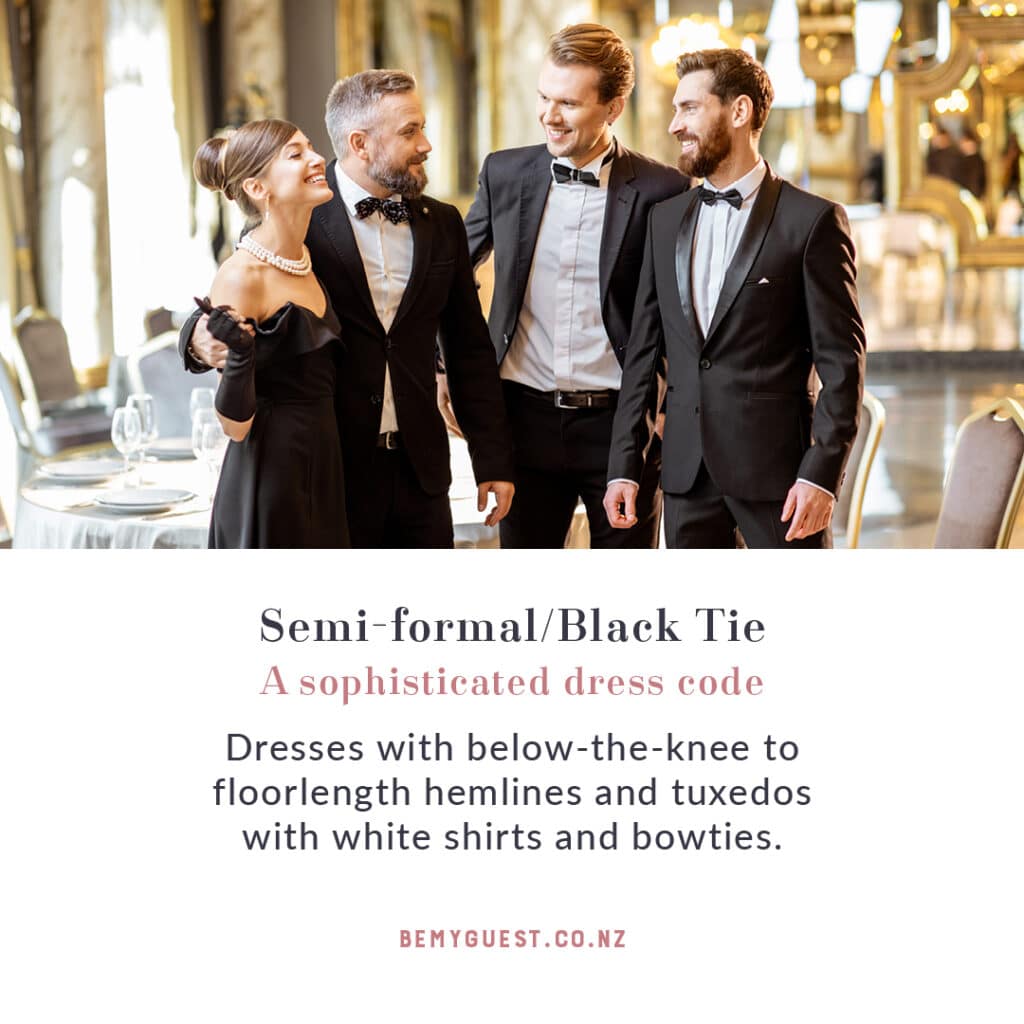
Example Wording:
"Black-tie. We ask that men wear a tuxedo and women wear a floor-length gown."
What is Black Tie Optional?
Black tie optional suggests that guests are encouraged to wear attire fitting a black-tie dress code, but it is not mandatory. Men can wear a tuxedo or a dark suit with a tie, while women can choose an evening gown, midi, or knee-length cocktail dress.
Example Wording:
"Black-tie optional. We ask that men wear a tuxedo or a dark suit and tie and women wear an evening gown or midi or knee-length cocktail dress."
What is Cocktail Attire?
Cocktail attire tends to be the default dress code for most weddings. There can be a bit of overlap between the more formal black tie and the less formal smart casual dress codes, but what sets this level of dress code apart is the length and fabric type of the dresses. Cocktail dresses allow for higher hemlines (i.e., above the knee). Men should wear a dress shirt, dress pants, a tie, and a blazer.
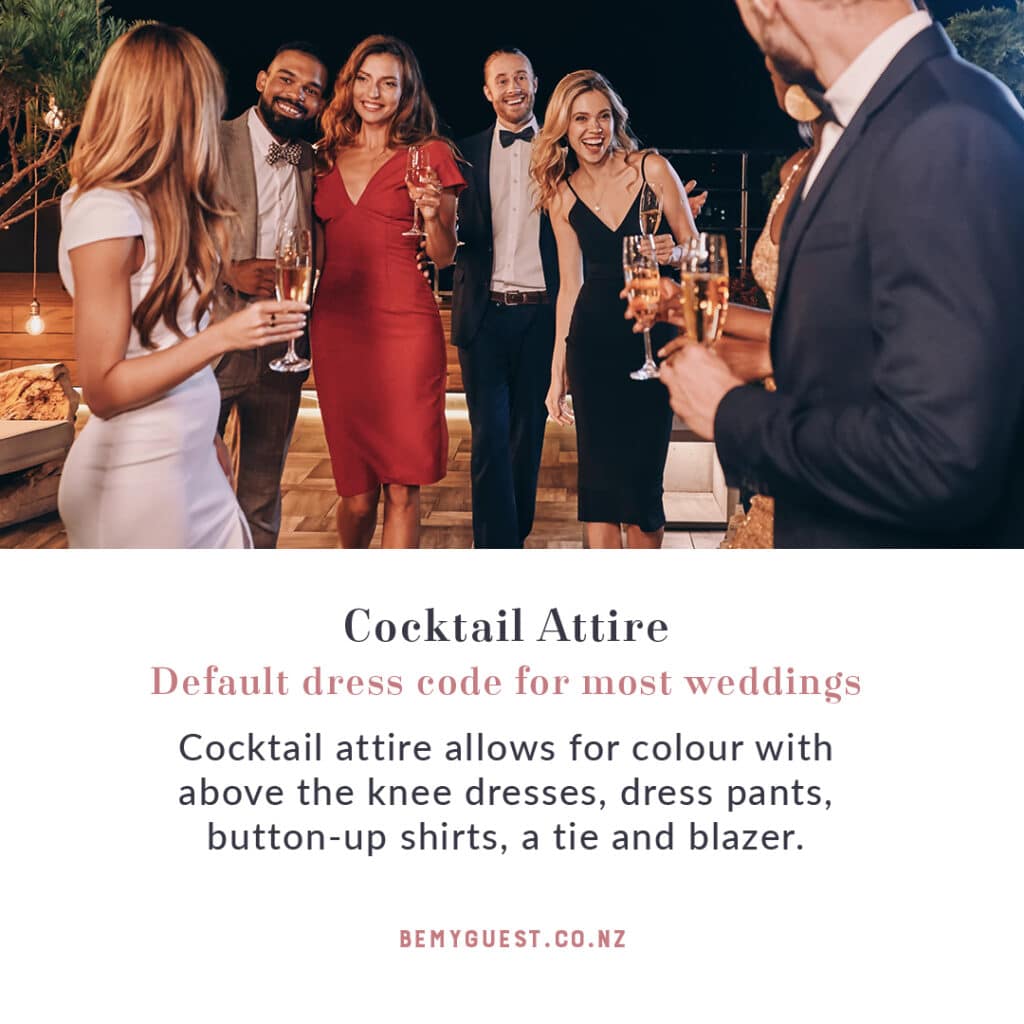
Example Wording:
"Cocktail attire. We suggest that men wear a suit or dress shirt with tie and women wear a midi- or knee-length dress or dressy separates."
What is Semi-Formal or Dressy Casual Attire?
Semi-formal attire includes cocktail-length dresses or dressy separates for women and a suit and tie for men. Dressy casual allows for comfort while maintaining a stylish appearance.
Example Wording:
"We ask that you wear semi-formal attire such as a cocktail-length dress or dressy separates for women and a suit and tie for men. Please note that the venue does not permit blue jeans or sneakers."
"Dressy casual. We want you to be comfortable at our wedding. The dress code is dressy casual attire. For this time of year on Waiheke Island, may we suggest the following attire:
- Women: Sundresses, lightweight separates, and flats or wedge heels for the outdoor ceremony on the lawn.
- Men: Light dress shirts with khaki or other lightweight slacks; jackets and ties optional."
What is Smart Casual?
Smart casual is perfect for a small, informal wedding or a garden wedding. A dress with a floral design or plain colour would be perfect. For men, a dress shirt and dress pants, with a tie optional.

Example Wording:
"Smart casual. May we suggest button-down shirts with khaki pants for men and sundresses with dressy flats or comfortable heels for women."
What is Beach Casual?
Beach casual is ideal for beach weddings and destination weddings. Men can wear a long or short-sleeved shirt with slacks or shorts, while women can opt for sundresses or dressy separates. Heels are discouraged in favour of flats or sandals.
Example Wording:
"Beach casual. May we suggest that men wear a long or short-sleeved shirt with slacks or shorts and ladies wear a sundress or dressy separates, like a nice top and skirt. Instead of heels, wear a pair of strappy or platform sandals."
What is Daytime Attire?
Daytime attire is suitable for weddings held outdoors. Sundresses and sandals are appropriate for women, while men can wear button-down shirts with pants. Avoid athletic wear.
Example Wording:
"Daytime attire. Our wedding will be taking place outdoors in the grass. May we suggest sundresses and sandals for women and button-down shirts with pants for men. Please, no athletic wear."
By providing clear dress code instructions, you can help your guests feel confident in their attire choices and ensure everyone looks great on your special day. Happy planning!
More wording & etiquette posts from the Wedding Invitation Wording Series
- Best Practices for Setting a Wedding RSVP DateSet the perfect RSVP date with this guide to the best practices for choosing the ideal reply date, ensuring collecting RSVPs is stress free
- How to request a child-free weddingTo help you navigate having an adults-only wedding, here are some tips on sharing that you're having a child-free wedding to your guests.
- Wedding Gift WordingAdvice, tips and examples for how to ask for specific gifts on your wedding invitations, including cash/wishing wells and registry options
- Adding guest’s names to wedding invitations & stationeryPersonalising invites with your loved one's names is an elegant introduction to your wedding festivities.
- Wording Wedding InvitationsWording your wedding invitations is easy with this guide. Learn the rules for wedding cards wording, plus example wording for wedding invites
- Wording Wedding Dress CodesWording what wedding dress code can be tricky! Here we have examples of the different dress styles and how to specify wedding guest attire

Table of Contents
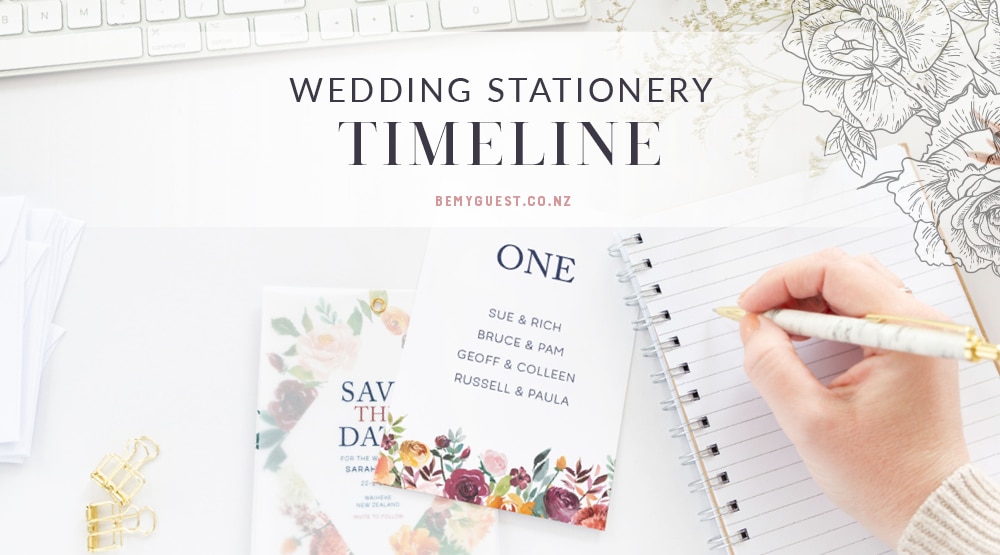
Your Essential Wedding Stationery Timeline & Checklists
This wedding invitation timeline has been developed to help New Zealand couples identify the important milestones to meet when planning, ordering and sending save the dates, wedding invitations, signage and day-of stationery
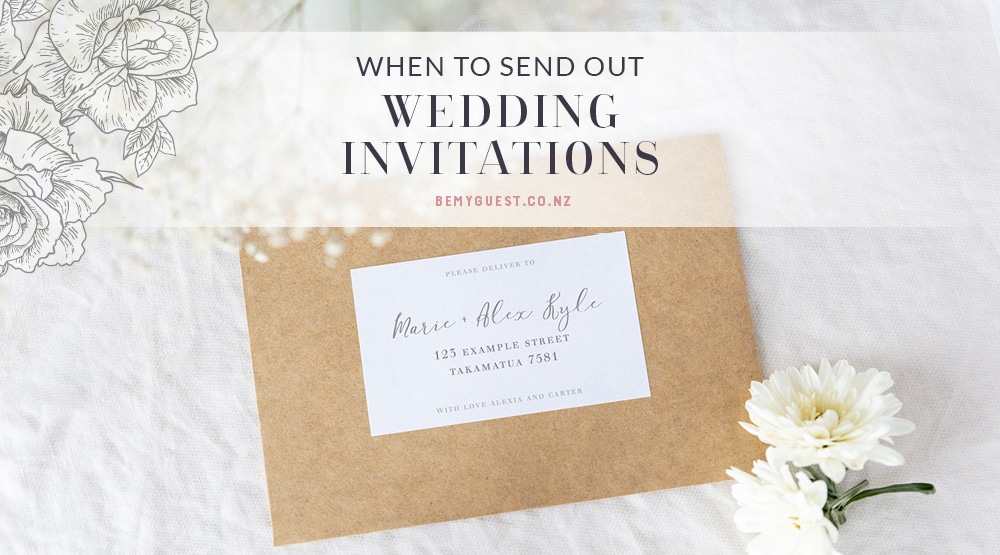
When to send out your wedding invitations
This New Zealand-specific guide covers when to send out wedding invitations to friends and family – so they have all the details to attend!
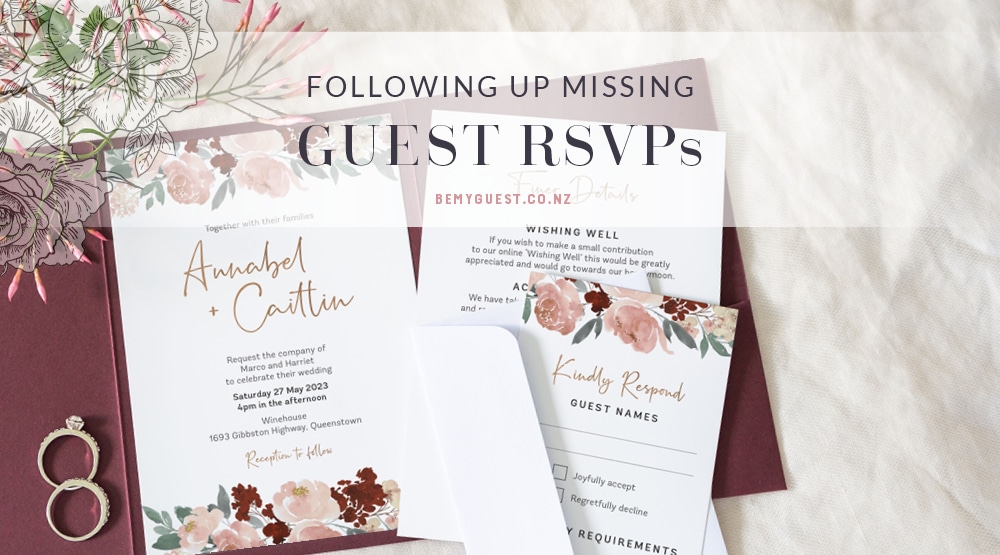
Following up guest RSVPs
Here’s our top tips for following up wedding guests who haven’t RSVPed, including our ‘magic email’ template for getting some certainty
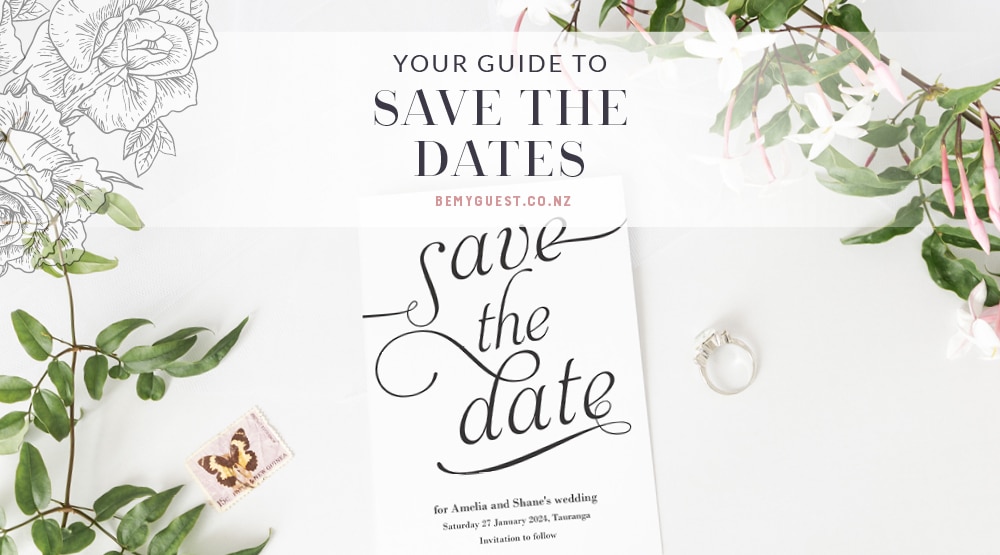
Your Guide to Save the Dates
Save the Date Cards are used to announce your wedding date to your wedding guests, giving your friends and family the best possible chance of attending.
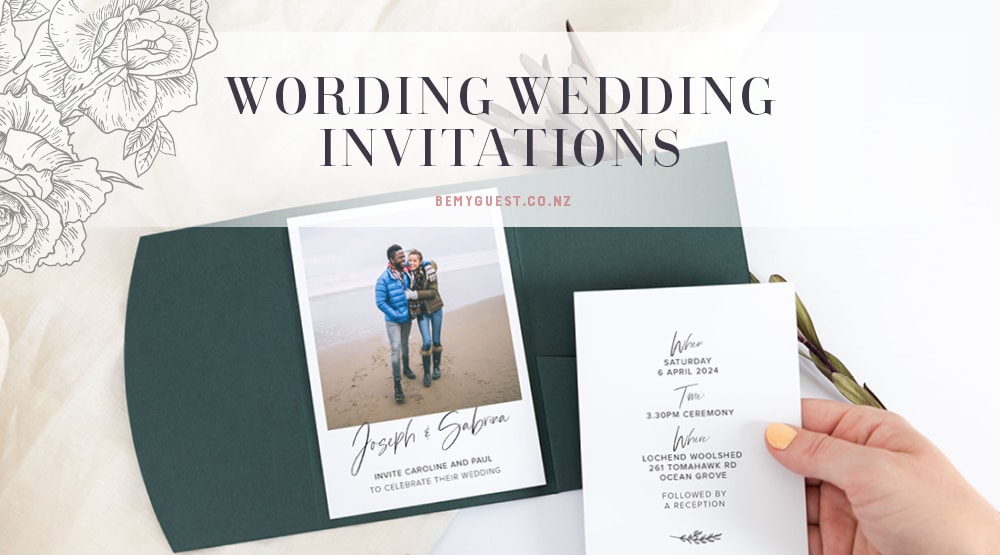
Wording Wedding Invitations
Wording your wedding invitations is easy with this guide. Learn the rules for wedding cards wording, plus example wording for wedding invites
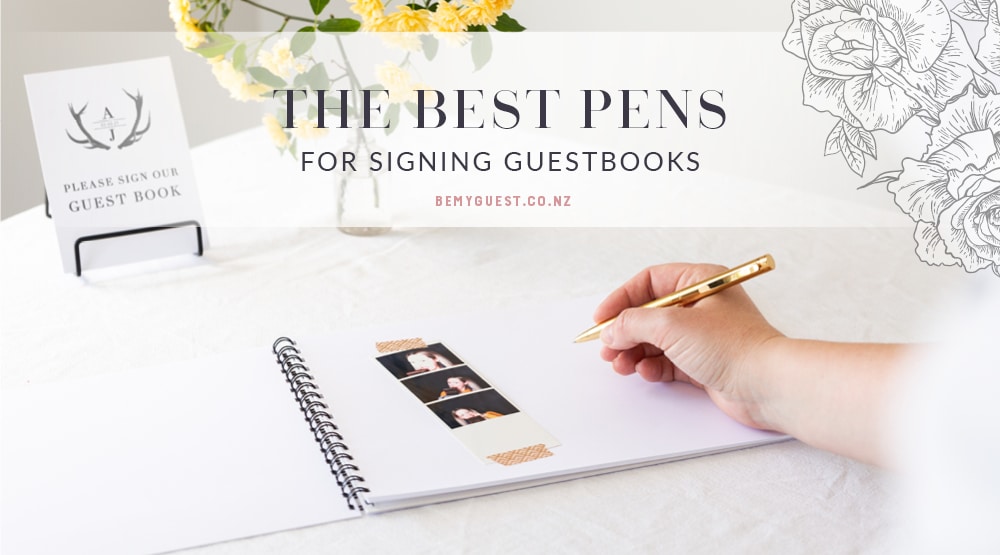
The Best Pens for Signing Guestbooks
We’ve trialled tons of pens for signing guestbooks. Check out the different options and things to consider.

Adding guest’s names to wedding invitations & stationery
Personalising invites with your loved one’s names is an elegant introduction to your wedding festivities.
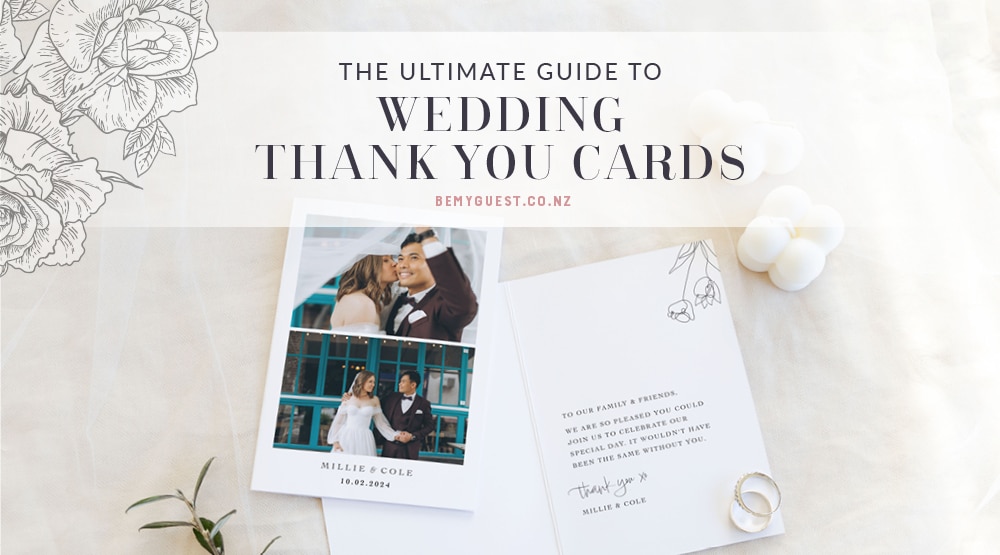
The Ultimate Wedding Thank You Card Guide
Writing your wedding thank you cards is the final wedmin task. We’ve put together the “The Ultimate Guide to Wedding Thank You Cards” to help
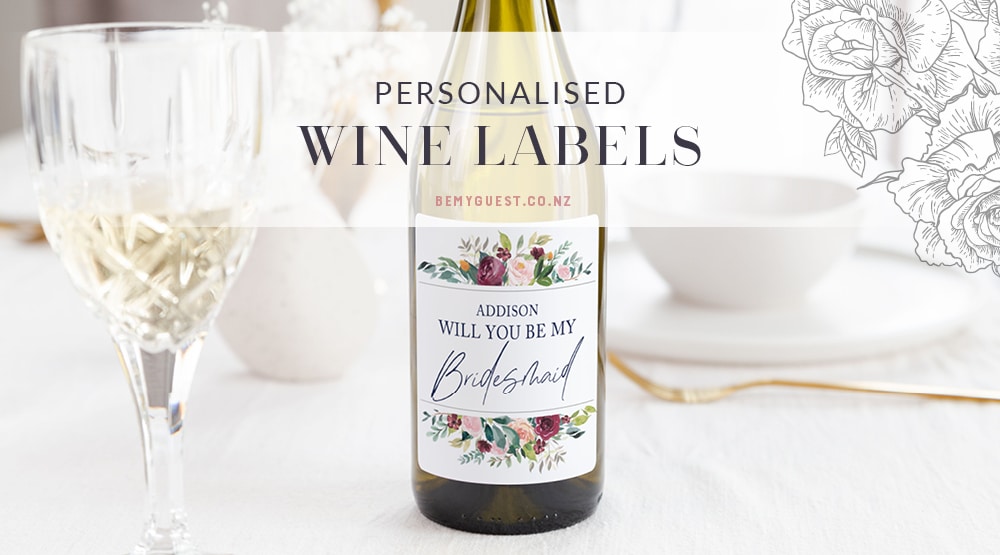
How to Apply Custom Wine Labels
Custom wine labels are a fantastic way to personalise gifts for any occasion. Here’s everything you need to know about creating, removing, and applying custom wine labels, ensuring your bottle looks perfect.
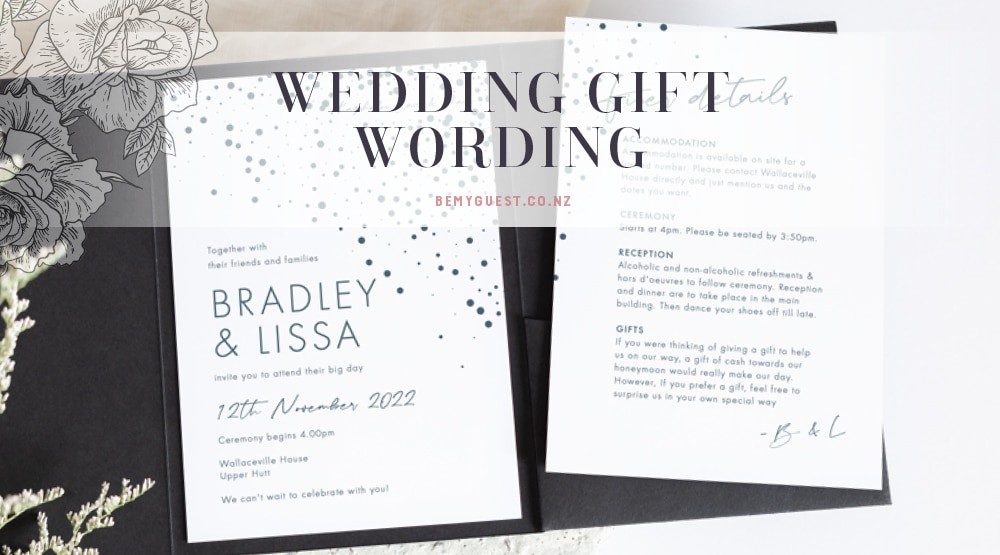
Wedding Gift Wording
Advice, tips and examples for how to ask for specific gifts on your wedding invitations, including cash/wishing wells and registry options

